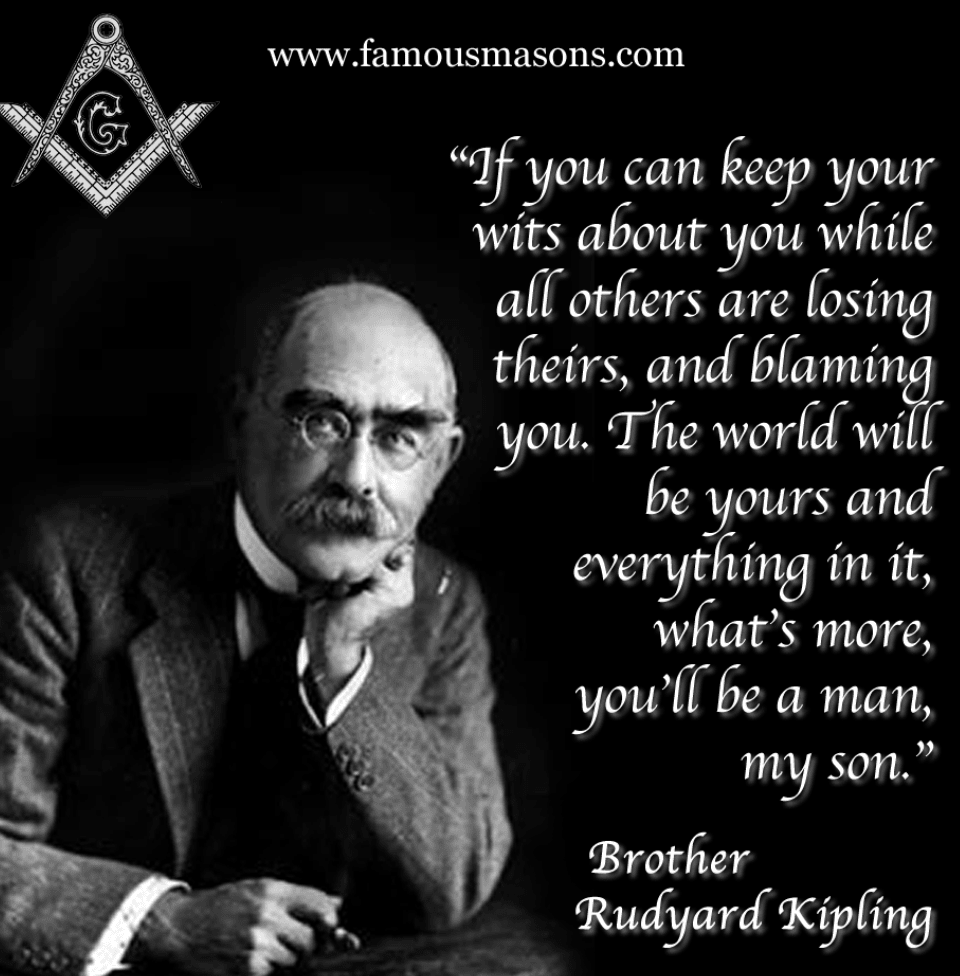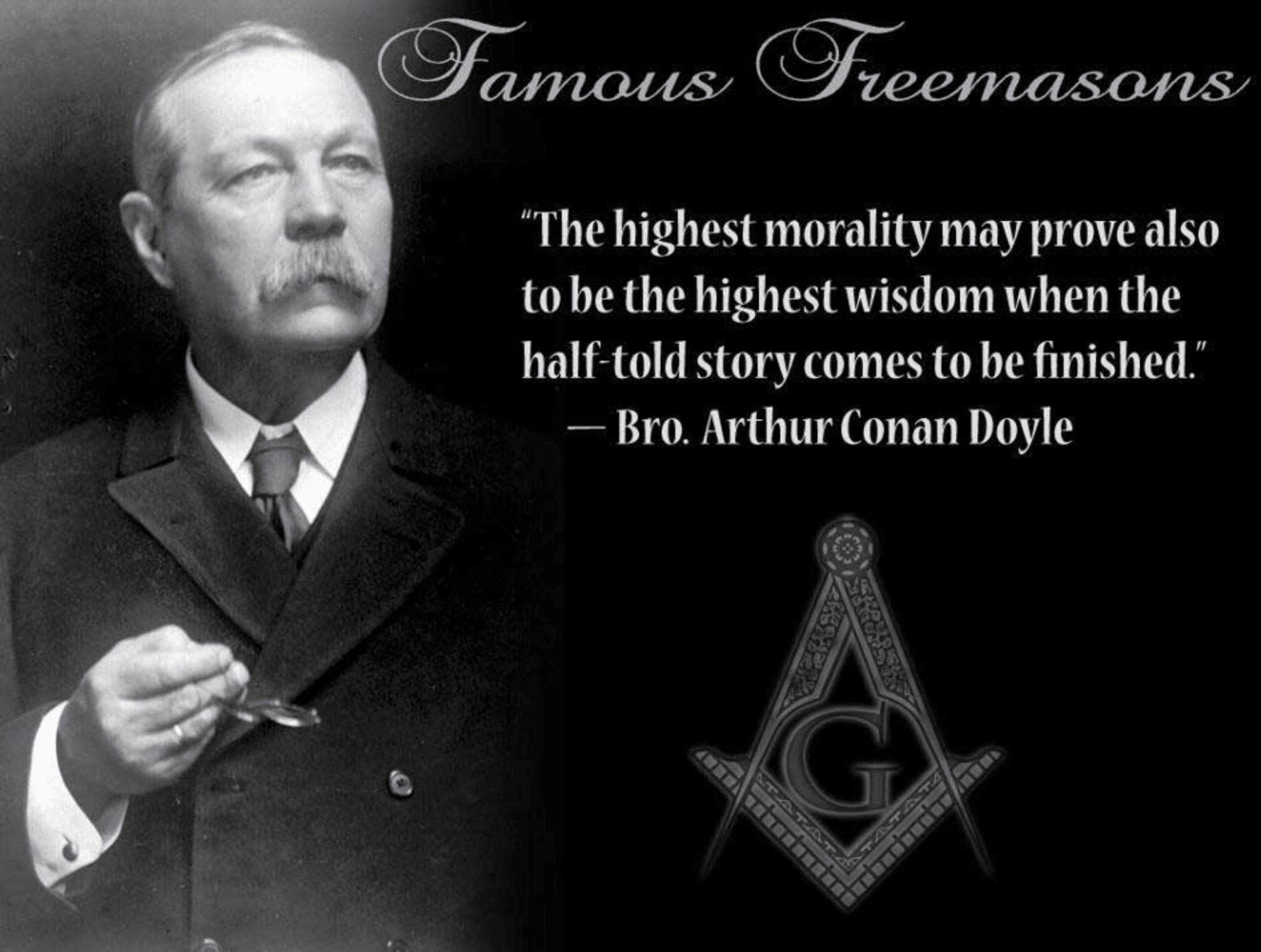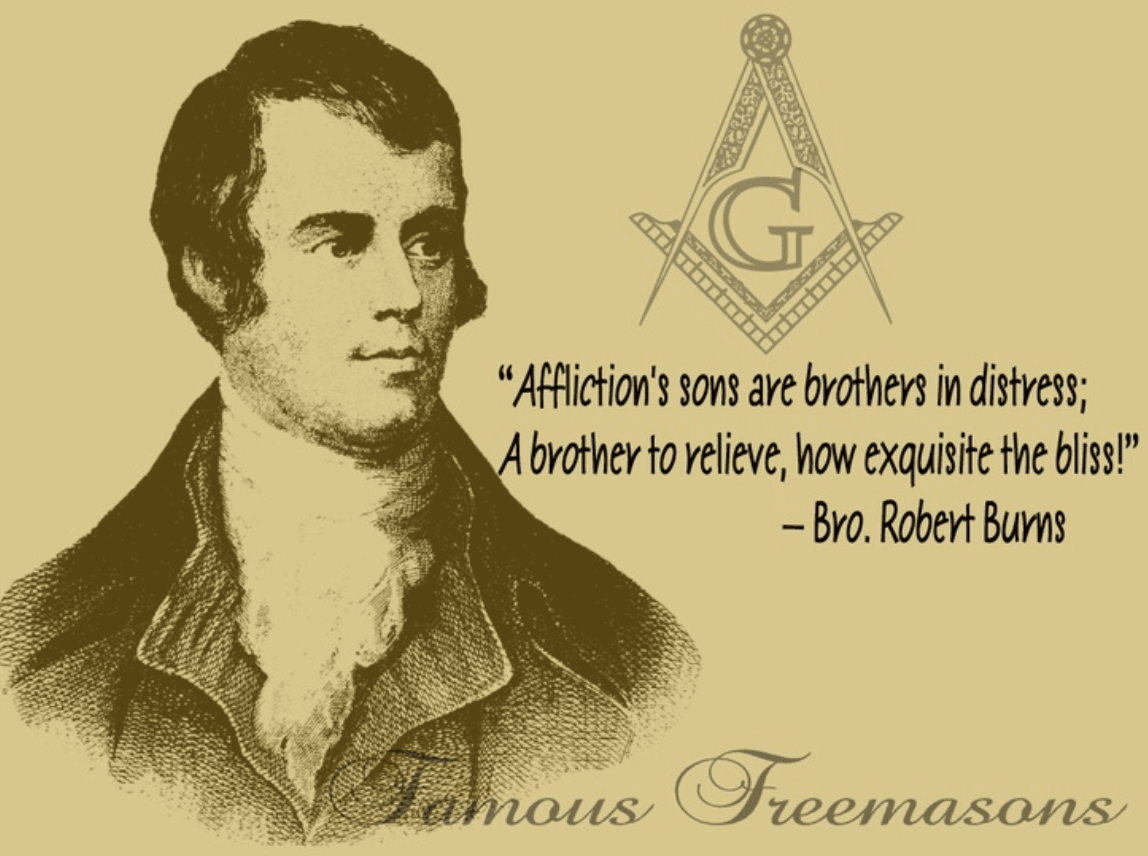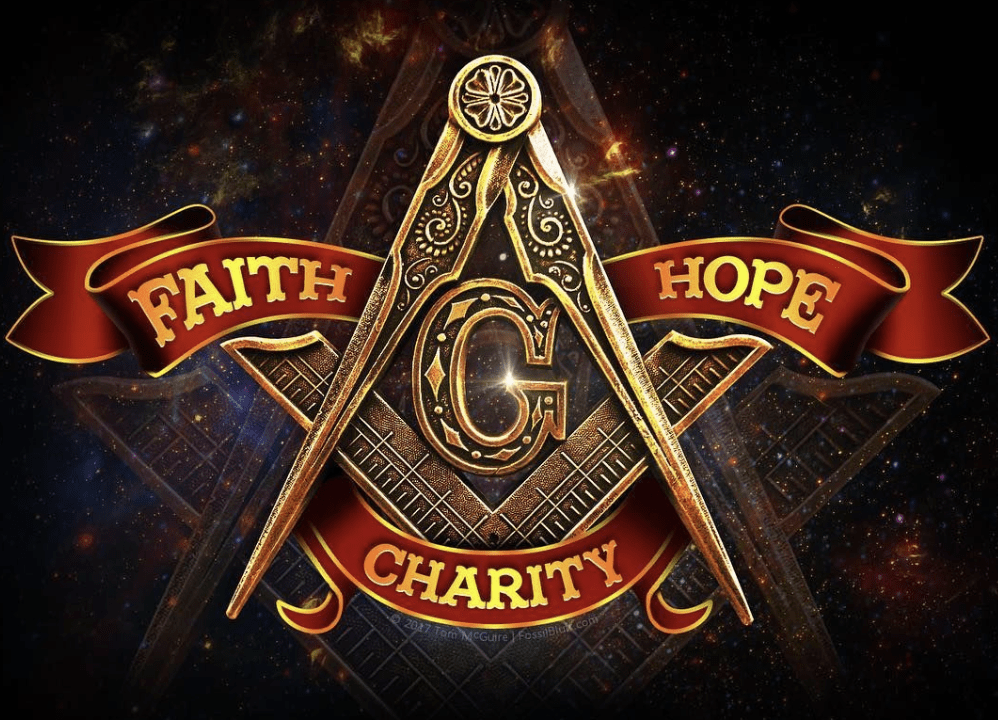Famous Masons and Freemasonry’s Influence on their Work
The Series
This is a blog series of famous Freemasons who excel on their respective fields. This blog attempts to connect the teachings and precepts of Freemasonry on their work. I will not explain the in-depth connections on the symbolism and allegory practices of Freemasonry to these Master Mason’s work, I’ll let the experts do that. This blog will briefly discuss about some of their works and relate these works to the basic lessons of Freemasonry. The goal is to make the public, and may be some Master Masons, understand that Freemasonry is not a secretive esoteric group who regard themselves as possessing higher knowledge or enlightenment, but a fraternal organization who believes in the golden rule, who believes the eternal heaven not made by human hands, and who take care of each other as brothers – the foundation of Freemasonry.

Famous Authors
While it's essential to recognize that being a Freemason doesn't mean an author's entire body of work is directly influenced by Freemasonry, it's possible to identify themes, values, and ideas associated with the fraternity in their writings. Let's explore the influence of Freemasonry on the work of some notable authors.
Rudyard Kipling (1865-1936)
Rudyard Kipling was a prolific British author and poet known for his vivid storytelling and exploration of themes related to the British Empire, adventure, and the human condition. He is best known for his works such as "The Jungle Book," "Kim," "The Man Who Would Be King," and "Gunga Din." Kipling's writing often celebrated the heroism and resilience of individuals in the face of challenges, drawing on his own experiences growing up in British India. He received the Nobel Prize in Literature in 1907, making him the first English-language author to do so.
Rudyard Kipling was initiated into Freemasonry in 1885 at the Lodge Hope and Perseverance No. 782 in Lahore, British India. His involvement in Freemasonry was significant in his life, and he remained an active Freemason throughout his years. Kipling's Masonic affiliation is reflected in some of his works, where he incorporates Masonic symbolism and themes.

One notable example is his poem "The Mother Lodge," in which he nostalgically reflects on his Masonic experiences and the sense of brotherhood and unity he found within the fraternity. The poem emphasizes the enduring bonds formed among Freemasons and the shared values of the craft.
Kipling's time as a Freemason likely influenced his writings by reinforcing themes of brotherhood, moral values, and the pursuit of knowledge and self-improvement. His Masonic connections contributed to the rich tapestry of his life and work, reflecting the impact of Freemasonry on the literary and cultural landscape of his era.
Samuel Clemens (Mark Twain)
Mark Twain became an Entered Apprentice at Polar Star Lodge No. 79 in St. Louis, Missouri. Just after he was raised to Master Mason in July 1861, he left Missouri and his lodge to travel to several States for his journalism career and to write for some newspapers. During his travels, Twain stopped paying his lodge dues and his Masonic membership was suspended. But his association with Masonry was not at its end. In February 1865, Twain served as senior deacon at Bear Mountain Lodge No. 75 in California’s Gold Country. https://californiafreemason.org/2022/02/11/tales-from-a-masonic-pen/
Mark Twain became a renowned American author best known for his novels "The Adventures of Tom Sawyer" and "Adventures of Huckleberry Finn." His works often explored the themes of social injustice, moral dilemmas, and the complexities of human nature. It also showed themes of brotherhood and personal growth. This theme is evident in Twain's exploration of friendship in "The Adventures of Tom Sawyer". Twain's writing style was characterized by humor and satire, making him a master of American literature. Although Mark Twain may be considered an inactive Mason, his seemed to find comfort on the lessons of Freemasonry. He gave a speech during the Lotos Club Dinner in New York in the 1900 (http://www.twainquotes.com/19001117.html), where he said: “Seven years ago when I was old and worn and down, you gave me the grip and the word which lifts a man up and makes him glad to be alive. I come back from my exile fresh and young and alive, ready to begin anew. Your welcome warms me, it makes me feel that it is a reality and not a glorious dream to vanish with the morning."
Sir Arthur Conan Doyle (1859-1930)
Sir Arthur Conan Doyle was a British author best known for his creation of the iconic detective Sherlock Holmes. His literary contributions to the detective fiction genre have had a profound and lasting impact, making Sherlock Holmes one of the most enduring and beloved fictional characters in literature. Conan Doyle's famous works include novels like "A Study in Scarlet," "The Hound of the Baskervilles," and numerous short stories featuring Holmes and his loyal friend and chronicler, Dr. John Watson. His writing is characterized by meticulous attention to detail, deductive reasoning, and the brilliant analytical mind of Sherlock Holmes.

Sir Arthur Conan Doyle was an active Freemason and a member of several Masonic lodges during his lifetime. He was initiated into Freemasonry in 1887 at the Phoenix Lodge No. 257 in Southsea, England. Conan Doyle's involvement in Freemasonry had a notable influence on his life and work.
While it may not be immediately evident in his Sherlock Holmes stories, the principles and ideals of Freemasonry can be discerned in some aspects of his writing. Freemasonry emphasizes brotherhood, morality, and the pursuit of truth and knowledge, and these themes may have subtly informed Conan Doyle's portrayal of Holmes and his steadfast pursuit of justice and truth.
Additionally, some Masonic symbolism and concepts appear in a few of his stories. For example, in "The Valley of Fear," the story revolves around a secret society with rituals and codes, echoing the secrecy and mystique often associated with Freemasonry.
Conan Doyle's dedication to Freemasonry extended beyond his literary work, as he actively participated in Masonic activities and held various positions within Masonic lodges. His affiliation with Freemasonry is a noteworthy aspect of his life that contributed to his personal and philosophical development while also leaving a subtle mark on some of his writings.
Sir Walter Scott (1771-1832):
Sir Walter Scott, was a Scottish novelist, poet, and historical writer, often regarded as one of the most prominent literary figures of the Romantic era. His works played a significant role in shaping Scottish and historical fiction literature. Scott is particularly celebrated for his historical novels, which vividly brought to life the history, culture, and traditions of Scotland. Some of his most famous novels include "Waverley," "Ivanhoe," "Rob Roy," and "The Heart of Midlothian." His writing is characterized by rich storytelling, intricate plots, and a deep appreciation for Scottish heritage.
Sir Walter Scott was the Grand Master of the Grand Lodge of Scotland from 1801 to 1806. His association with Freemasonry had a notable influence on his life and work. In many of his historical novels, Scott incorporates Masonic symbols, themes, and values. Freemasonry's principles of honor, chivalry, and brotherhood can be seen in the characters and narratives of his novels. For instance, "Ivanhoe" showcases themes of chivalry and knightly ideals, which are in alignment with Masonic values of honor and virtue.
Moreover, Scott's novels often depict characters who are bound by strong, enduring friendships, echoing the sense of brotherhood and camaraderie promoted within Freemasonry. The loyalty and bonds among characters in his works are reflective of the Masonic ideals of unity and mutual support.

Robert Burns (1759-1796)
Robert Burns was a Scottish poet and lyricist widely regarded as the national poet of Scotland. His works are celebrated for their emotional depth, lyrical beauty, and profound exploration of universal themes. Burns's poetry often revolved around love, nature, social justice, and the human condition. His most famous works include "Auld Lang Syne," "To a Mouse," "A Red, Red Rose," and "Tam o' Shanter." Burns's writing is marked by its use of the Scots dialect, which added authenticity and charm to his verses.
He joined the Freemasons in 1781 and was initiated into Lodge St. David, Tarbolton.
In his poems and songs, Burns frequently celebrated themes of brotherhood and unity, echoing the Masonic principles of fellowship. Burns' Masonic influence is most evident in his poem "Auld Lang Syne," which is often sung at the conclusion of Masonic meetings and other gatherings. The phrase "auld lang syne" itself carries Masonic connotations, meaning "old long since" or "for old times' sake." It reflects the Masonic emphasis on brotherhood and the enduring bonds of friendship. While not all of his works directly reference Freemasonry, his commitment to these ideals is evident in poems like "A Man's a Man for A' That."
Additionally, Burns' poem "The Farewell" expresses sentiments of brotherhood and farewell, which resonate with Masonic ideals. His Masonic experiences likely reinforced his appreciation for values such as brotherhood, morality, and personal growth, which are central to Freemasonry. These principles can be seen echoing in many of his poems, where he often explores themes of friendship, love, and the human spirit.
Voltaire (1694-1778):
Voltaire, whose real name was François-Marie Aroue was a French Enlightenment writer, philosopher, and historian. He is renowned for his wit, satire, and sharp criticism of the prevailing institutions and ideologies of his time. Voltaire's works include essays, plays, novels, and philosophical treatises. Some of his most famous works include "Candide," "Letters Concerning the English Nation," and "Philosophical Dictionary." Voltaire championed the values of reason, tolerance, freedom of thought, and the separation of church and state, making him a leading figure of the Enlightenment movement.
Voltaire was initiated into Freemasonry in 1778, shortly before his death, at the Lodge Les Neuf Sœurs (The Nine Sisters) in Paris. His involvement in Freemasonry, even if it was brief due to his advanced age at the time of initiation, is a notable aspect of his life.
While Voltaire did not produce extensive Masonic writings, his philosophical and intellectual pursuits were aligned with many of the principles promoted by Freemasonry. The Masonic fraternity emphasizes the pursuit of knowledge, moral enlightenment, and the rejection of dogma, all of which were central themes in Voltaire's works.
In his novel "Candide," for example, Voltaire satirically critiques the irrationality, cruelty, and intolerance of his society. The novel advocates for a more enlightened and rational worldview, reflecting Voltaire's commitment to reason and the pursuit of truth—values that align with Freemasonry's emphasis on knowledge and the rejection of superstition.
Furthermore, Voltaire's belief in religious tolerance, as expressed in works like his "Treatise on Tolerance," is consistent with Freemasonry's acceptance of individuals from various religious backgrounds and its commitment to unity and brotherhood.
In conclusion, while Voltaire's association with Freemasonry occurred late in his life, the influence of Masonic values—such as the pursuit of knowledge, reason, and tolerance—can be seen throughout his writings. His short-lived involvement in Freemasonry adds an intriguing dimension to his legacy as a prominent Enlightenment thinker and writer.
To be continued...
bro.k.u.09.15.23
